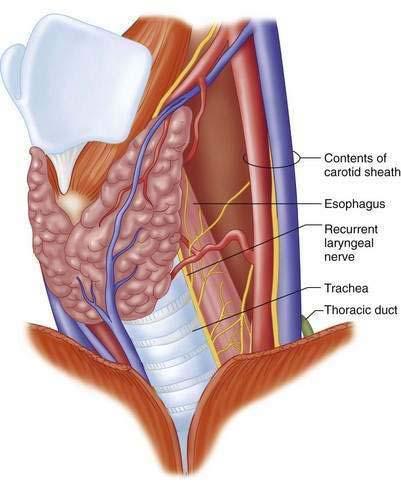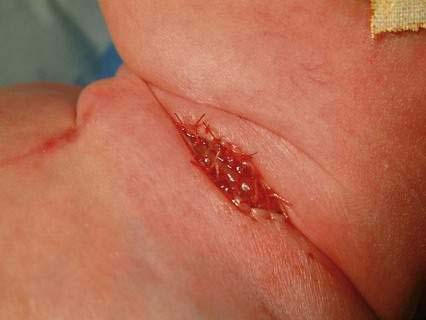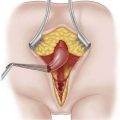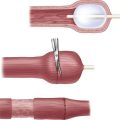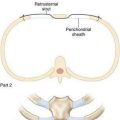CHAPTER 6 Cervical Esophagostomy
Step 1: Surgical Anatomy
Step 2: Preoperative Considerations
♦ Use the left side of the neck for future esophageal replacement because this procedure will be done through the left chest, the mediastinum, or in the substernal position.
Step 3: Operative Steps
Incision
Identify the Esophagus
♦ Locate the esophagus by palpating the bougie within it. Do not confuse this with the endotracheal tube!
♦ Dissect the soft tissues away from the esophageal wall using blunt and sharp dissection. Limit the use of electrocautery, which could damage the vagus or recurrent laryngeal nerves.
Create the Stoma
♦ Attach the wall of the esophagus to the platysma muscle circumferentially with 5-0 silk or Vicryl sutures. Use muscular bites only, and do not enter the esophageal lumen. Make the stoma as wide as possible.
♦ Close the remaining wound (if any) in layers; a drain is not necessary. Apply Dermabond over the skin closure unless the stoma takes up the entire wound.
Step 4: Postoperative Care
Step 5: Pearls and Pitfalls
♦ Take special care when dissecting the esophagus away from the posterior (membranous) wall of the trachea.

